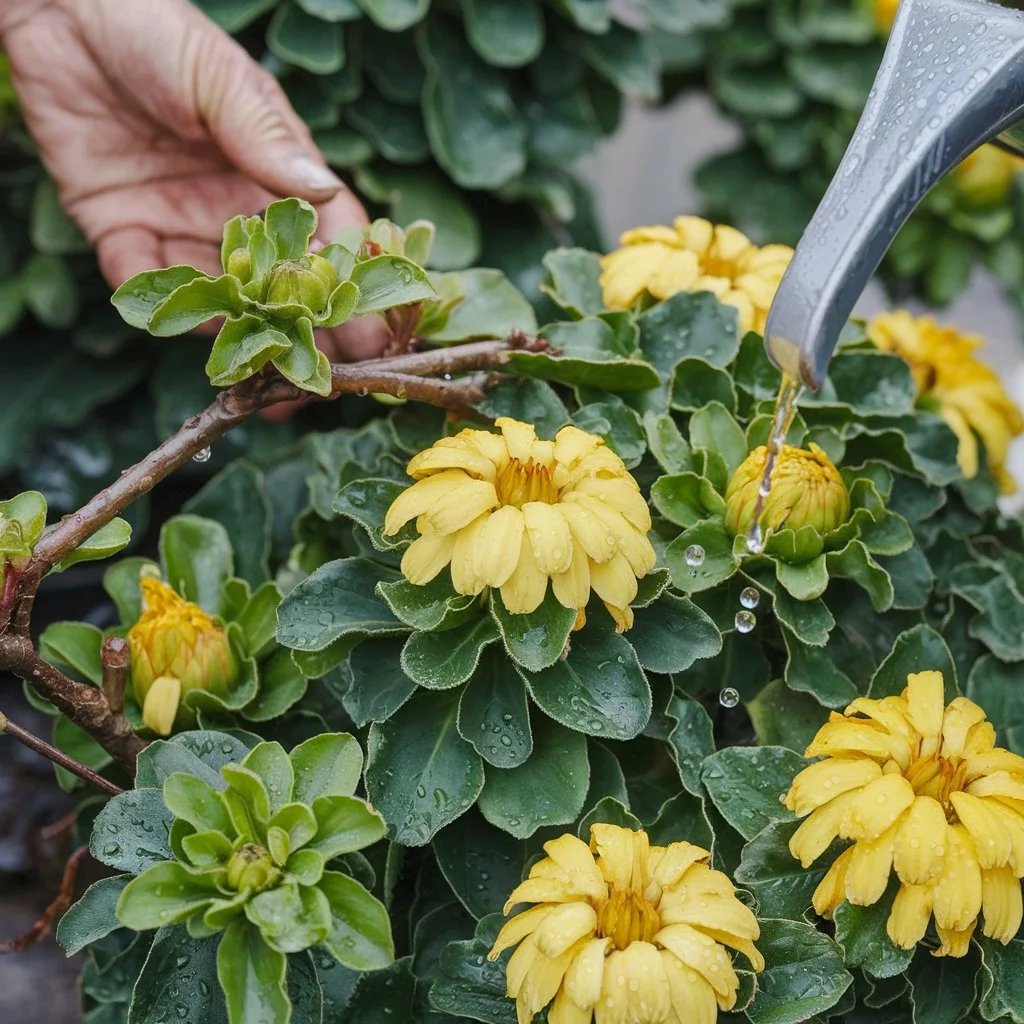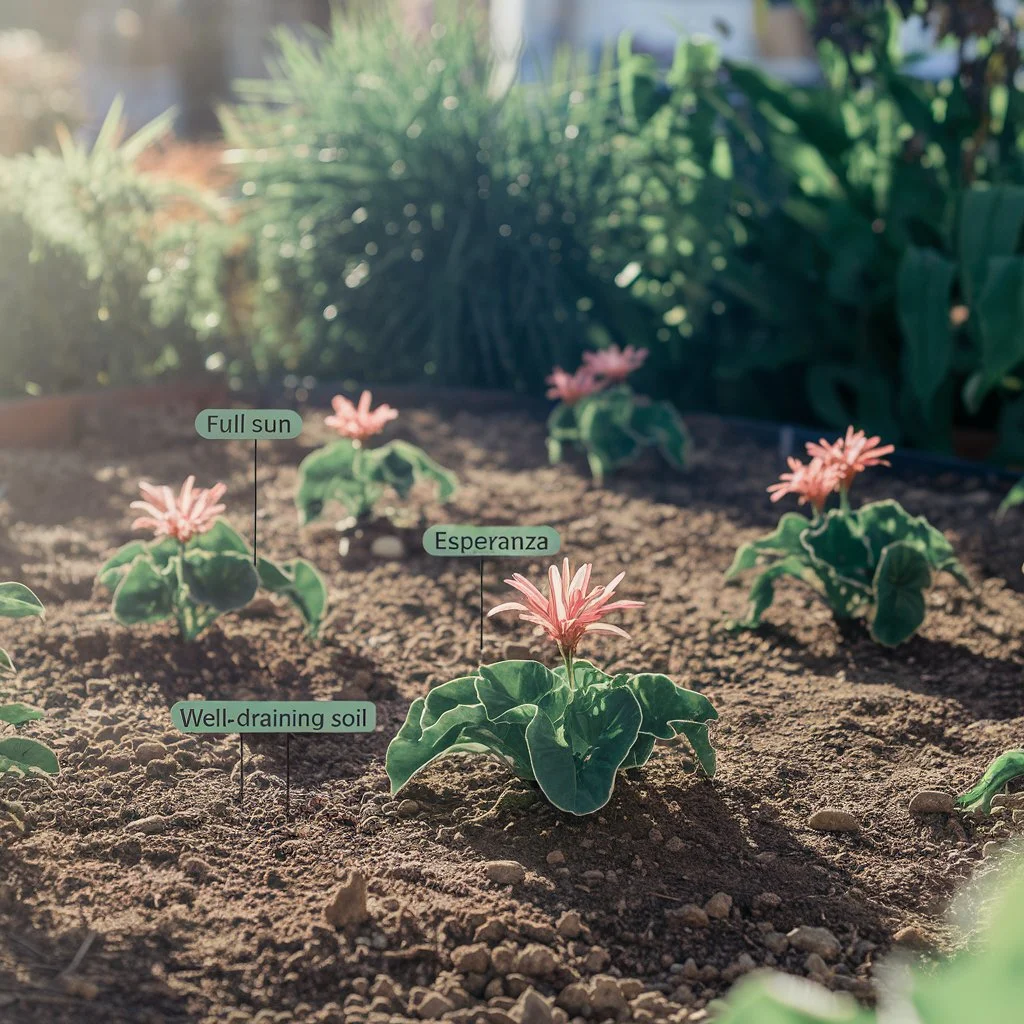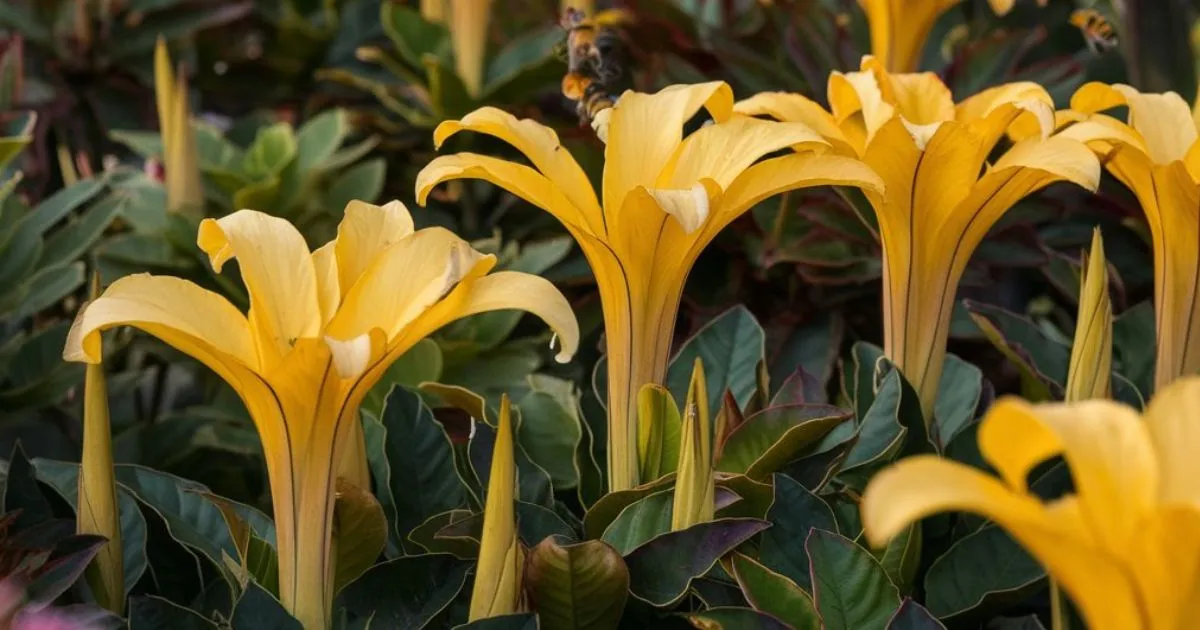Imagine standing in the warm sunlight of your garden, surrounded by the golden glow of Esperanza flowers. These vibrant, trumpet-shaped blossoms bring a unique cheerfulness to your landscape, filling your space with color and life. Known for their resilience, ease of care, and ability to withstand hot, dry climates, these flowers are an excellent choice for gardeners of all skill levels. This article will guide you through everything you need to know about growing, caring for, and enjoying the radiant beauty of Esperanza flowers in your garden.
Table of Contents
What is the Esperanza Flower?
The Esperanza flower, scientifically known as Tecoma stans, is often called Yellow Bells or Yellow Trumpetbush. This tropical beauty originates from warmer regions, where its bright yellow blooms are common. Known for its trumpet-shaped flowers, the Esperanza plant is a member of the Bignoniaceae family, the same family as trumpet vines and jacarandas. Gardeners love its bold, showy look, but it’s also popular for its adaptability and low-maintenance nature.


Appearance and Blooming Cycle
Esperanza flowers are known for their sunny, golden blooms that seem to shine against their rich green foliage. Blooming typically begins in late spring and can continue into fall, with flowers flourishing through warmer months. Each cluster of blooms creates a stunning contrast with the plant’s glossy green leaves, making it an ideal focal point in garden design.
Benefits of Growing Esperanza Flowers in Your Garden
Why choose Esperanza for your garden? Here are some of the key benefits:
- Drought Tolerance: these flowers can withstand long periods without water, making them perfect for regions where water conservation is essential.
- Attracts Pollinators: Bees, butterflies, and hummingbirds are naturally drawn to Esperanza’s bright blooms, helping maintain a thriving pollinator population in your garden.
- Low Maintenance: Once established, these flowers need little more than sunlight and occasional watering, making them ideal for busy gardeners or those new to gardening.
- Versatile Landscape Options: Esperanza’s versatility makes it a valuable addition to various garden styles, whether used as a hedge, border plant, or container flower.
Step-by-Step Guide on Growing Esperanza Flowers
Growing Esperanza requires some basic gardening knowledge, but with the right setup, it can thrive with ease.
Ideal Growing Conditions for Esperanza Flowers
- Soil Requirements: Esperanza does best in well-draining soil, particularly sandy or loamy types with a neutral to slightly alkaline pH (between 6.5 and 8.5).
- Sunlight: These flowers crave sunlight, needing at least six to eight hours of full sun each day to produce abundant blooms. Shadier spots may lead to fewer flowers and slower growth.
- Temperature and Climate: Esperanza is ideal for USDA zones 8-11, thriving in warm, dry climates. Although frost can harm these flowers, they can sometimes bounce back in spring if the roots are protected.
Planting Esperanza Flowers
To get started with planting Esperanza, follow these simple steps:
- Choose the Right Location: Select a spot that provides full sun exposure and allows for adequate air circulation. Good airflow helps prevent issues with fungal diseases.
- Planting Time: Early spring or late winter is the best time to plant Esperanza, as the warming soil encourages healthy root development.
- Planting Depth and Spacing: Dig a hole twice the width of the plant’s root ball, place the plant at the same depth it was in its pot, and space multiple plants at least 3-5 feet apart. Proper spacing ensures that each plant has room to grow and receive adequate sunlight.
Caring for Your Esperanza Flower
While Esperanza is a low-maintenance plant, a few simple care practices can keep it thriving.
Watering and Feeding Requirements
- Watering Schedule: Young Esperanza plants need regular watering to establish their root systems. Mature plants, however, are drought-tolerant and only require watering during extended dry spells.
- Fertilizing Tips: Use a balanced, slow-release fertilizer twice a year, preferably in spring and mid-summer, to promote healthy growth and blooming.
Pruning and Maintenance
- Pruning Technique: To encourage fuller growth, prune Esperanza plants in early spring. Remove dead or weak branches, shaping the plant to your liking.
- Deadheading: By removing spent flowers, you’ll encourage new blooms, prolonging the plant’s flowering season.
- Pest and Disease Control: While generally resistant to pests, Esperanza may occasionally attract aphids and spider mites. If pests become an issue, use insecticidal soap to control them naturally.
Winter Care for Esperanza Flowers
- Protecting Against Frost: In colder areas, consider planting Esperanza in pots to bring indoors during winter. Covering outdoor plants with frost blankets can help prevent cold damage.
- Reducing Watering: During winter months, reduce watering to prevent root rot, especially if the plant is in a container. Excess moisture can harm the roots when growth slows.
Common Issues and Solutions When Growing Esperanza Flowers
Even a resilient plant like Esperanza can sometimes encounter issues. Here’s how to troubleshoot common problems:
Why Your Esperanza Flower Might Not Be Blooming
- Lack of Sunlight: Esperanza needs full sunlight to bloom. If you notice fewer flowers, check that the plant isn’t in a shaded area.
- Nutrient Deficiency: Consider adding a phosphorus-rich fertilizer, as phosphorus promotes flower production.
- Overwatering or Poor Drainage: Overwatering can lead to root problems that hinder blooming. Always check the soil’s moisture level before watering, especially if the plant is in a shaded area.
Leaf Discoloration and Root Rot
- Yellow Leaves: Yellowing leaves may indicate overwatering, nutrient deficiencies, or poor soil drainage.
- Root Rot Prevention: To prevent root rot, ensure the soil is well-draining and water only when necessary, particularly during cooler months when the plant’s water needs are lower.
How to Use the Esperanza Flower in Your Landscape
Esperanza flowers offer several creative options for incorporating them into your garden design.
- Borders and Hedges: For an eye-catching border, plant Esperanza along the edge of your garden beds or as a natural hedge. Its height and bushy growth make it an excellent choice for creating privacy.
- Containers and Patios: Esperanza grows well in large containers, making it an ideal choice for patios or balconies. A container plant can easily be moved indoors during winter, extending its life in colder climates.
- Pollinator Garden: Include Esperanza in a pollinator-friendly garden to attract bees, butterflies, and hummingbirds, contributing to local biodiversity.
FAQ about Growing Esperanza Flowers
Q1: How fast does the Esperanza flower grow?
Esperanza is a rapid grower, often reaching full size within a couple of growing seasons under optimal conditions.
Q2: Can Esperanza flowers survive winter?
In USDA zones 8-11, Esperanza can survive winter outdoors. In colder climates, however, potted plants should be brought indoors to protect them from frost.
Q3: How often should I fertilize my Esperanza plant?
Fertilize twice yearly, ideally with a slow-release fertilizer in spring and mid-summer, to promote healthy growth and blooming.
Q4: Is the Esperanza flower toxic to pets?
Yes, the Esperanza plant is mildly toxic if ingested by pets, so keep it out of reach of animals prone to nibbling on plants.
Conclusion
Incorporating Esperanza flowers into your garden can add a splash of color and a touch of tropical flair that’s hard to resist. These bright, resilient blooms are perfect for gardeners who want a beautiful, low-maintenance plant that attracts pollinators and withstands hot, dry conditions. With a few simple steps for planting and care, you can enjoy the sunny charm of Esperanza flowers season after season.
If you’re ready to add this cheerful plant to your garden, follow the steps outlined here and watch as your garden transforms into a vibrant haven for you and local pollinators alike. So why wait? Get your hands in the soil, and bring the beauty of Esperanza into your outdoor space today!

